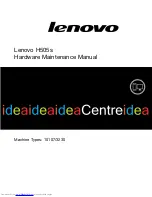
System Administration
Page 4-3
Eagle TX Series AMOS Based Terminal Server Technical Manual, Rev. 01
PROGRM.INI
The serial port 0 speed may have one of the following settings:
1200
9600
19200 (default)
38400
The baud rate selection must agree with your terminal baud rate in order to see messages during boot up
and to enter setup in the future. It should also agree with the baud setting in the system initialization file
to avoid having to change the terminal baud rate between booting and normal operation.
Since there is no status display on the terminal server, the “Display console boot messages” should
always be YES.
When you have completed making changes to the CMOS configuration menu, press the ESC key. You
will then be asked for a confirmation that you want to save your changes. Answer either Y (yes) or N
(no).
The terminal server will then complete the boot up process.
MODIFYING THE SYSTEM INITIALIZATION FILE
The system initialization command file is a special file in account DSK0:[1,4] that defines all of the
devices connected to your terminal server, the jobs that will run on the terminal server, and special
programs which need to be loaded into memory. It is often called simply the “initialization file.” As your
requirements change or you add capabilities to your terminal server, you must modify the initialization
file.
As described in Chapter 2, the name of the system initialization file for your terminal server is
AMOS32.INI. This special file in account DSK0:[1,4] defines to the AMOS operating system all of the
devices connected to your terminal server, the jobs that will run on the terminal server, and special
programs which need to be loaded into memory. As requirements change or as capabilities are added to
your terminal server, you must modify the system initialization file, or use one of the pre-configured INIs
already in the terminal server.
NEVER change the system initialization file directly! Always make a copy of it and modify the
copy, as described below.
To make a copy of the system initialization file to be modified and tested:
1.
Log into DSK0:[1,4] by typing:
LOG DSK0:[1,4]
RETURN
2.
Then, type:
COPY TEST.INI=AMOS32.INI
RETURN
















































